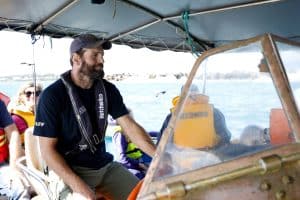 Originally called Ngāmotu (the islands), the site of New Plymouth was occupied for hundreds of years by Māori. More than 60 pā and kāinga (village) sites have been recorded in the urban area. The Ngamotu Beach area provides the only deep water port on the west coast of New Zealand, and is surrounded by several sea stacks and small islands, collectively known as the Sugarloaf Islands. Mataora, Motu-o-Tamatea, Moturoa Island and Mikotahi were hunting, fishing and gathering grounds and places of refuge for the Taranaki and Te Āti Awa People for hundreds of year.
Originally called Ngāmotu (the islands), the site of New Plymouth was occupied for hundreds of years by Māori. More than 60 pā and kāinga (village) sites have been recorded in the urban area. The Ngamotu Beach area provides the only deep water port on the west coast of New Zealand, and is surrounded by several sea stacks and small islands, collectively known as the Sugarloaf Islands. Mataora, Motu-o-Tamatea, Moturoa Island and Mikotahi were hunting, fishing and gathering grounds and places of refuge for the Taranaki and Te Āti Awa People for hundreds of year.
Pākehā traders set up a whaling and trading station at Ngāmotu in 1828, but it was not until 1841–42 that planned settlement by the Plymouth Company brought 868 immigrants from Devon and Cornwall in England to the ‘New‘ Plymouth. The town site was chosen because of its fertile land, gentle terrain and sheltered beach (none of the river mouths were suitable as ports).
The Port of Taranaki was established in 1875, and construction of the main breakwater began in 1881.
The islands today provide shelter for many New Zealand fur seals, little blue penguins and other sea life, and are also a fantastic view point for the coastline and Mount Taranaki.

 Carl Hayman born in Taranaki, started his professional rugby career playing for the Otago Highlanders.
Carl Hayman born in Taranaki, started his professional rugby career playing for the Otago Highlanders.
 Chaddy’s Charters other loyal team member is Rescue III, a Liverpool Class C, three-skin mahogany hull lifeboat.
Chaddy’s Charters other loyal team member is Rescue III, a Liverpool Class C, three-skin mahogany hull lifeboat. 


 Originally called Ngāmotu (the islands), the site of New Plymouth was occupied for hundreds of years by Māori. More than 60 pā and kāinga (village) sites have been recorded in the urban area. The Ngamotu Beach area provides the only deep water port on the west coast of New Zealand, and is surrounded by several sea stacks and small islands, collectively known as the Sugarloaf Islands. Mataora, Motu-o-Tamatea, Moturoa Island and Mikotahi were hunting, fishing and gathering grounds and places of refuge for the
Originally called Ngāmotu (the islands), the site of New Plymouth was occupied for hundreds of years by Māori. More than 60 pā and kāinga (village) sites have been recorded in the urban area. The Ngamotu Beach area provides the only deep water port on the west coast of New Zealand, and is surrounded by several sea stacks and small islands, collectively known as the Sugarloaf Islands. Mataora, Motu-o-Tamatea, Moturoa Island and Mikotahi were hunting, fishing and gathering grounds and places of refuge for the 